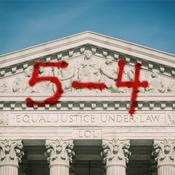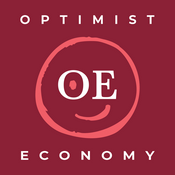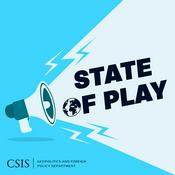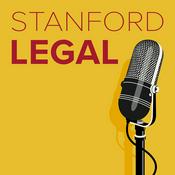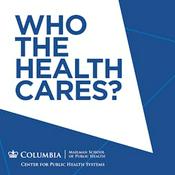179 episodes

Nationwide Injunctions After CASA
12/11/2025 | 43 mins.
When a single federal judge can freeze a president’s policy nationwide, it raises big questions about checks and balances and democratic accountability. That’s one reason nationwide injunctions have become central to some of today’s most consequential legal battles—and why the Supreme Court’s recent decision in Trump v. CASA matters.At a live recording, Stanford Legal host Diego Zambrano sat down with Professor Mila Sohoni, one of the country’s leading scholars on federal courts and administrative law, for a conversation that moved from President Trump’s day-one birthright-citizenship order to the Court’s ruling in CASA, including how lower courts are now navigating the decision’s new, but murky, constraints on nationwide injunctions.Sohoni breaks the protection these injunctions can offer when sweeping executive actions threaten millions, the risks of empowering individual judges to halt national policy, and the incentives for strategic forum shopping in a polarized era. She also explains how CASA reins in—but doesn’t eliminate—the nationwide injunction, leaving room for broad relief through class actions, universal vacatur, and “complete relief” findings. The discussion sheds light on how the legal landscape is shifting after CASA, and why nationwide injunctions continue to shape major clashes between the courts and the executive branch.Links:Mila Sohoni >>> Stanford Law page“The Puzzle of Procedural Originalism” >>> Stanford Law pageConnect:Episode Transcripts >>> Stanford Legal Podcast WebsiteStanford Legal Podcast >>> LinkedIn PageRich Ford >>> Twitter/XPam Karlan >>> Stanford Law School PageDiego Zambrano >>> Stanford Law School PageStanford Law School >>> Twitter/XStanford Lawyer Magazine >>> Twitter/X (00:00:00) The Scope of Nationwide Injunctions(00:12:01) Epistemic and Democratic Arguments Against Nationwide Injunctions(00:28:54) The CASA Decision(00:29:37) Legal Basis and Impact of Executive Orders(00:38:20) Conclusion and Audience Questions Hosted by Simplecast, an AdsWizz company. See pcm.adswizz.com for information about our collection and use of personal data for advertising.

Crime, Justice, and Trump’s DOJ
11/14/2025 | 33 mins.
Over a 35-year career at the Department of Justice, Jonathan Wroblewski, JD ’86, watched the country’s stance on criminal sentencing harden, soften, recalibrate, and shift again. One of his early cases at the DOJ, which involved a cross-burning in rural Georgia, sparked a fascination with sentencing policy that shaped the rest of his career. Today, he is one of the country’s leading experts on sentencing law and policy.In this episode of Stanford Legal, host Professor Pamela Karlan talks with Wroblewski about crime and punishment, including the evolution of modern sentencing policies. Wroblewski, who has been serving as a visiting instructor at Stanford Law teaching courses on sentencing and AI in criminal justice, also offers a look inside his long career at the DOJ, where Karlan also served two separate stints as a political appointee.The conversation moves between how crime waves shape public attitudes, why some sentencing reforms take hold while others stall, and what happens inside the DOJ when long-standing norms begin to erode. Wroblewski’s stories, drawn from decades of work across administrations, bring those shifts into sharper focus.Links:Jonathan Wroblewski >>> Stanford Law pageConnect:Episode Transcripts >>> Stanford Legal Podcast WebsiteStanford Legal Podcast >>> LinkedIn PageRich Ford >>> Twitter/XPam Karlan >>> Stanford Law School PageDiego Zambrano >>> Stanford Law School PageStanford Law School >>> Twitter/XStanford Lawyer Magazine >>> Twitter/X(00:00) Intro to Jonathan Wroblewski’s Career (05:01) Evolution of Sentencing Policies (15:01) Shifts in Sentencing Philosophies (25:01) Public Perception and Crime Rates (35:01) Future Perspectives for Fair and Effective Legal Practices Hosted by Simplecast, an AdsWizz company. See pcm.adswizz.com for information about our collection and use of personal data for advertising.

Navigating Uncertainty and Unprecedented Shifts in Federal Health Policy
11/06/2025 | 32 mins.
“The amount of chaos that’s been introduced into the federal health policy landscape is unprecedented,” says Michelle Mello, professor at Stanford Law School and the Stanford University School of Medicine.That turmoil, she explains, has left major gaps in expertise, trust, and leadership—and states are rushing to fill the void. In this episode of Stanford Legal, host Pamela S. Karlan talks with Mello about what this moment means for the future of science, public health, research, and the law.Mello describes how the hollowing out of career expertise at the U.S. Department of Health and Human Services has upended vaccine policy and research funding, forcing states into unfamiliar leadership roles. She and Karlan also unpack how shifting scientific guidance during the pandemic eroded public confidence, how politicized grant-making is reshaping the research ecosystem, and state governments’ growing role in creating what she calls a “shadow CDC.”Despite the turmoil, Mello points to a few bright spots: state-level experimentation could generate valuable evidence of what works and what does not, and there are reassuring signs from the lower courts, she says, which she believes are capable of separating law from politics.Earlier this year, Mello explored many of these themes in her JAMA Health Forum paper, “The Hard Road Ahead for State Public Health Departments.”Links:Michelle Mello >>> Stanford Law pageJAMA Health Forum paper >>> “The Hard Road Ahead for State Public Health DepartmentsConnect:Episode Transcripts >>> Stanford Legal Podcast WebsiteStanford Legal Podcast >>> LinkedIn PageRich Ford >>> Twitter/XPam Karlan >>> Stanford Law School PageDiego Zambrano >>> Stanford Law School PageStanford Law School >>> Twitter/XStanford Lawyer Magazine >>> Twitter/X (00:00:00) Health Policy and COVID-19 Vaccines(00:05:10) The Vaccine Rollout Challenges(00:10:25) Public Trust and Recommendations(00:16:40) The Role of the Vaccine Committee(00:23:55) NIH Grant Process Insight(00:29:43) MIT's Stance on NIH Compact Hosted by Simplecast, an AdsWizz company. See pcm.adswizz.com for information about our collection and use of personal data for advertising.

National Guard or Political Weapon?
10/30/2025 | 30 mins.
When the National Guard shows up in American cities, it’s usually after hurricanes, fires, or floods, not political fights. But recent federal deployments have changed the landscape and raised pressing questions about how far a president’s domestic military powers can go. In this episode of Stanford Legal, host Pam Karlan talks with Professor Bernadette Meyler about the growing use of the National Guard for domestic law enforcement and what it reveals about shifting boundaries of presidential power. Links:Bernadette Meyler >>> Stanford Law pageTheaters of Pardoning >>> Stanford Law publications pageConnect:Episode Transcripts >>> Stanford Legal Podcast WebsiteStanford Legal Podcast >>> LinkedIn PageRich Ford >>> Twitter/XPam Karlan >>> Stanford Law School PageDiego Zambrano >>> Stanford Law School PageStanford Law School >>> Twitter/XStanford Lawyer Magazine >>> Twitter/X(00:00:00) Overview of National Guard Deployment (00:06:01) Changes in Immigration Enforcement (00:13:01) Continuous Deployment and Monitoring Elections (00:18:01) Training and Law Enforcement Activities of National Guard (00:24:31) Presidential Powers and Constraints (00:29:38) Ninth Circuit Panel’s Decision and Future Prospects Hosted by Simplecast, an AdsWizz company. See pcm.adswizz.com for information about our collection and use of personal data for advertising.

Political Enemies and the Weaponization of the DOJ
10/16/2025 | 29 mins.
When politics drives prosecutions, what happens to the rule of law? Are we in uncharted waters? Stanford Legal host Professor Pamela Karlan sits down with her colleague criminal justice expert Robert Weisberg to unpack the extraordinary federal indictments of former FBI director James Comey and New York Attorney General Letitia James—with more potentially on the way.Weisberg, the Edwin E. Huddleson, Jr. Professor of Law and co-director of the Stanford Criminal Justice Center, explains how grand jury indictments normally work, why these cases are unusual, and how selective and vindictive prosecution claims might play out when the evidence of political motivation is broadcast via Truth Social missives. Karlan and Weisberg also discuss how Justice Department norms separating the White House from individual charging decisions have been systematically broken—and why these indictments, built on shaky legal ground and thin narratives, could face serious procedural challenges.Links:Robert Weisberg >>> Stanford Law pageConnect:Episode Transcripts >>> Stanford Legal Podcast WebsiteStanford Legal Podcast >>> LinkedIn PageRich Ford >>> Twitter/XPam Karlan >>> Stanford Law School PageDiego Zambrano >>> Stanford Law School PageStanford Law School >>> Twitter/XStanford Lawyer Magazine >>> Twitter/X(00:00:00) Targeted Prosecutions (00:10:00) Understanding Selective vs. Vindictive Prosecution (00:20:00) Comey Indictment and Related Current Events (00:27:00) John Bolton’s Legal Troubles (00:34:00) Potential Challenges for Adam Schiff Hosted by Simplecast, an AdsWizz company. See pcm.adswizz.com for information about our collection and use of personal data for advertising.
More Government podcasts
Trending Government podcasts
About Stanford Legal
Listen to Stanford Legal, Strict Scrutiny and many other podcasts from around the world with the radio.net app

Get the free radio.net app
- Stations and podcasts to bookmark
- Stream via Wi-Fi or Bluetooth
- Supports Carplay & Android Auto
- Many other app features
Get the free radio.net app
- Stations and podcasts to bookmark
- Stream via Wi-Fi or Bluetooth
- Supports Carplay & Android Auto
- Many other app features


Stanford Legal
download the app,
start listening.


